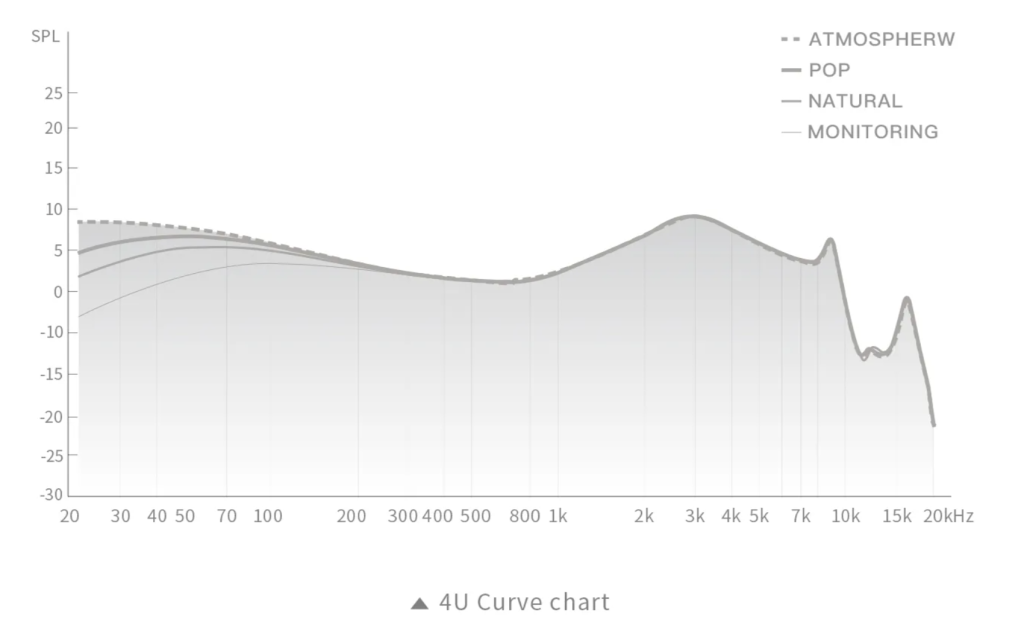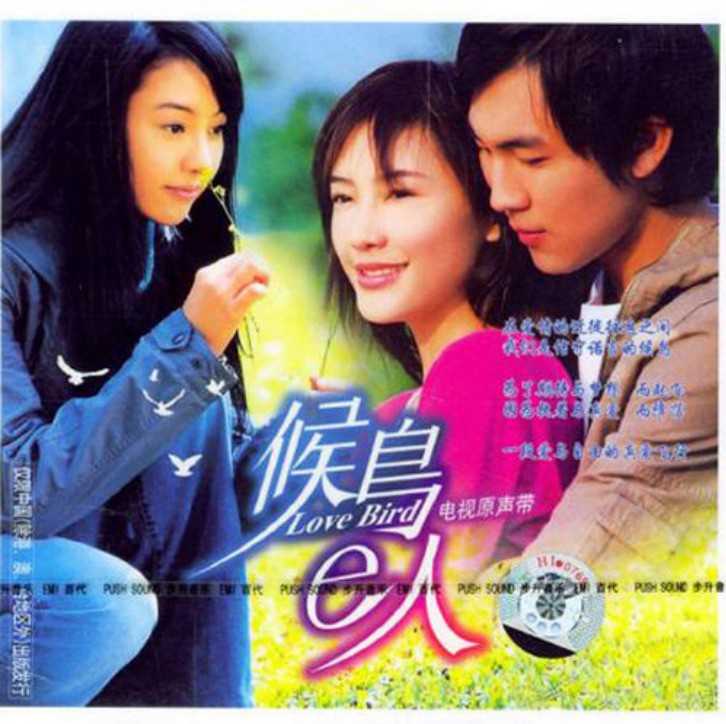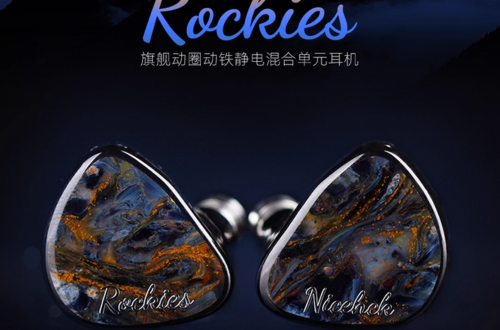HIFI Diary: TANCHJIM 4U 4-Level Sound Adjustment In-Ear Sound Quality Review
I. Introduction
Thanks to the group member for sending the Angel Jimmy 4U, which is also the first in-ear headphone with hardware-adjustable sound that the BLOG owner has reviewed. Faced with this innovative product that breaks through the traditional form, the author is both pleasantly surprised and can’t help but have many feelings and questions. Once upon a time, headphones were considered precise acoustic works of art, and their sound quality characteristics were inseparable from the development team and the personal style of the sound engineer. Choosing headphones was essentially an endorsement of a particular team’s musical taste, perhaps the only opportunity for the general public to have auditory resonance with musical masters. However, with the development of the industry, this sense of identity based on brands and individuals is gradually being deconstructed. When manufacturers finally open up the tuning authority to users, I can’t help but think before the evaluation: what are the advantages and disadvantages of this decision? After losing the core technical barrier of tuning, what is left of the manufacturer’s core competitiveness? And to what extent can users improve their music appreciation when they gain the freedom of sound customization? With these thoughts in mind, the BLOG owner started this in-depth review.

II. Preparation for Evaluation
The headphones being reviewed this time are the Angel Jimmy 4U. The testing equipment used was a laptop/Xiaomi 13ultra + Lao Ban Zhang LBZ-04 dongle + WAGNUS. Omni Sheep USB cable, and the playback software used was QQ Music/foobar. The headphones used the original 3.5 single-ended cable, but since the original ear tips from the group member who sent the headphones for testing were lost, the BLOG had to find the most ordinary pair of ear tips for testing. As for the adjustable low-frequency knob, it’s worth mentioning. The BLOG owner believes that as long as these headphones can encourage actively switching between different levels of low frequencies during the testing period to obtain a good listening experience, then the design is successful. If the BLOG owner ultimately loses the motivation to adjust, then there is no doubt that the design of the headphones is a failure.
III. Assessment Tracks/Scoring Method
The track selection is based on the blogger’s usual listening preferences, which are about 50% ACG music, 30% modern music, and 20% classical music. Therefore, the selection leans heavily towards Japanese music. The scoring criteria are derived from a simplified version of Liu Hansheng’s “Twenty Essentials for Audio,” with a maximum score of 10, though generally, the highest score given is 9. A score of 8 indicates a clear advantage in the scoring category, 7 signifies excellence, 6 means it can be normally appreciated, 5 means it can be normally listened to, and scores below 5 are not commented on. For a more detailed evaluation plan, please refer to here.
IV. Testing Begins
| TANCHJIM 4U (Natural) | TANCHJIM 4U (Pop) | MOONDROP LAN | MOONDROP ARIA2 | |
| Integrity | 7/10 | 7/10 | 6.5/10 | 7.5/10 |
| High frequency | 6/10 | 6/10 | 6/10 | 7/10 |
| Medium frequency | 5.5/10 | 6/10 | 6/10 | 6.5/10 |
| Low frequency | 6/10 | 5.5/10 | 5/10 | 7/10 |
| Analysis, separation | 6/10 | 5.5/10 | 6/10 | 7/10 |
| Sound field, density | 6/10 | 5.5/10 | 6/10 | 6/10 |
| Drive, dynamic | 6/10 | 6/10 | 5.5/10 | 7/10 |
| Total score | 6.1/10 | 5.9/10 | 5.9/10 | 6.9/10 |
1、Song:听!是谁在唱歌,Singer:刘若英/黄韵玲

I’ve been wanting to chat about this song for ages, not just because it really resonates with BLOG owner’s personally, but also because it’s just a genuinely great song. Back in 2004, as the theme song for the TV drama 《候鸟e人》 (Migrant Bird e-people), Taiwanese musician 黄韵玲 (Huang Yunling) wrote the music and invited 刘若英 (Liu Ruoying) to sing it with her. And the lyricist, 姚谦 (Yao Qian), he kept his signature style of writing lyrics that are full of metaphors and depth. He wove the core theme of the drama, “migration and belonging,” into the song, using the image of “migrant birds” to represent modern people’s journey to find a peaceful spiritual home.
Unlike other lyricists, 姚谦 (Yao Qian)’s lyrics are super conversational, “restrained” but “natural.” His famous work 《鲁冰花》 (Lupin Flower) uses a child’s voice and really simple lyrics to tell a story that sticks with you. In this song, through phrases like “相遇的季节” (xiangyu de jijie – season of meeting) and “仔细回想的呼唤” (zixi huixiang de huanhuan – carefully recalling the call), it shows the feeling of being lost in time, the regrets and acceptance in the passing years.
黄韵玲 (Huang Yunling)’s music is based on simplicity. The verse part uses a calm, narrative melody, while the chorus uses jumps in pitch and changes in rhythm to amp up the drama. The arrangement is led by piano, with strings adding layers underneath. It keeps the simple feel of folk music, but also uses rich harmonies to bring out the different layers. But the thing that’s really genius is definitely bringing in 刘若英 (Liu Ruoying) for the duet. 刘若英 (Liu Ruoying)’s voice is clear and melodic, and 黄韵玲 (Huang Yunling)’s voice is a bit husky but full of charm. The two voices weave together perfectly, complementing each other and creating a layered sound. Especially in the chorus, the call-and-response and overlapping vocals really emphasize the theme of “calling out,” and create a feeling of dialogue across time and space. As the theme song for the TV drama 《候鸟e人》 (Hou Niao e Ren – Migrant Bird e-people), the song dives deeper into the drama’s exploration of “migration and belonging,” and it became a classic example of film and TV music for urban romance themes in the early 2000s. The image of the migrant bird in the song was also really influential, and it’s kept inspiring lots of works ever since.
Back to the 4U headphones, the best setting for this song is definitely the third level “Pop”. Yeah, you might lose a little detail in the mids and lows compared to the second level “Natural” setting. But the vocals are just perfect for showing the difference between the two singers’ voices, and the sound also feels a bit more solid.
Looking at the style of the 4U, the first three settings are all pretty lightweight and easy to listen to. The sound is clean, not super detailed, but also not too aggressive. Overall, no matter which setting you pick for the low end, the general vibe is a little on the warmer side. The vocals are positioned nicely, not like they’re right in your face or anything.
The 4U’s technical performance isn’t like, mind-blowing or anything, but as long as you’re not listening to super demanding tracks, it’s totally good enough for vocal-focused music.
2、歌曲名:Break up! (结束!),歌手名:宮崎歩 (みやざき あゆみ),专辑名:DIGIMON HISTORY 1999-2006 All The Best

This CD is pure 80s and 90s nostalgia to the max. It’s got all the classic tracks from the early 《数码暴龙》 (Digimon) series. Seriously, it’s a compilation album that’s as classic as it gets, a real gem. 《Break up! 》 is the theme song for Armor Evolution in 《数码暴龙02》 (Digimon 02) from 2000. Whenever this song kicks in, you know it’s the climax of the battle. “Hot-blooded,” “hype,” “ideals,” “challenge” – all these vibes are what this song is about. But the idea behind 《Break up! 》 is different from 《Brave Heart》, the previous evolution theme song, even though they’re kind of in the same ballpark. 《Break up! 》 is about breaking through tough times, waking up to yourself and overcoming obstacles. 《Brave Heart》 is more about unleashing courage and chasing freedom when you’re in a tight spot. They’re both talking about similar stuff, but that little difference actually shows how the core ideas of the two anime series are a bit different.
Getting back to the music itself, 《Break up! 》 starts off with a medium tempo in the verse. Then, in the chorus, it goes all out with high-pitched melodies jumping around (like “キミを 越えてゆくんだ” – “I will surpass you”) and a ton of drum beats to create this explosive energy. That’s also when the animation would hit its evolution peak. If you listen closely, you’ll hear the electric guitar riff running through the whole song. Compared to the electronic sounds in 《Brave Heart》, 《Break up! 》 has more of a rock feel, which totally fits its core vibe of “breaking through.” At 宫崎步 (Ayumi Miyazaki)’s concert in Guangzhou in 2024, this song got the whole crowd singing along. 25 years of nostalgia built up, and now the theme of this song goes way beyond just the anime itself. It’s become a universal symbol of fighting through tough times, something that tons of young and middle-aged people get. Overall, 《Break up! 》 kept the success going from 《Brave Heart》, and it nailed it by connecting the idea of “breaking through” with the “evolution” thing in the story. It turned this abstract idea into something you can actually “do,” creating a whole new story about “courage” in the minds of that generation.
Let’s talk about how the 4U headphones handle this song. Being a track packed with electronic effects, the bass is pretty heavy. If you listen with the third level “Pop”, the bass details just turn into a muddy mess, and the whole low end gets way too heavy. But when you switch to the second level “Natural”, you get way more detail in the bass, and it also eases up on the mids and vocals. Basically, you can use the bass complexity of this song as the dividing line between the 4U’s second and third levels. Also, the vocals in the second level are a bit further away compared to the third level. You might feel the vocals are a little distant in this song with the second level, but the imaging is still pretty decent for headphones in this price range, and it doesn’t really mess with the vocal positioning.
V. Summary
To really talk about the 4U, first we gotta break down the differences between the 4 settings. First up, the “监听” (Monitor) setting’s low end is just not listenable, no doubt about it. Whether it’s instruments or vocals, everything sounds noticeably dry and cold. You might get the illusion that the sound is cleaner, but both the density and the timbre are seriously lacking. Honestly, it’s just not worth it.
The second setting, “Natural”, is way better. It balances out a bit of Atmosphere and density, and those timbre issues are much better. If you’re into lighter music tastes or sweet, youthful songs, this setting actually sounds pretty good. But if you’re listening to vocals with a thicker tone, or more complex pop music arrangements, or electronic music with a lot of bass, this isn’t a great pick.
The third setting, “Pop”, is where it’s at. By sacrificing a little bit of detail in the mids and lows, it makes both instruments and vocals sound great, and the density is noticeably improved compared to the previous setting. It creates a really nice sense of Atmosphere.
The last setting, “氛围” (Atmosphere), is like, you listen to it for a second and you’re done. The bass is just way too much, it messes up the imaging of the vocals. Since BLOG owner’s doesn’t really listen to super bass-heavy stuff like heavy metal, it’s hard to say what kind of music this Atmosphere setting is actually for. I’ll leave it up to you folks who might need it to figure that out.
Overall, with the 天使吉米4U (Angel Jemi 4U) headphones, if you don’t mind switching between the second and third settings, it really does make them more versatile for different kinds of music. And both of those settings are actually pretty usable. Of course, it’s not perfect. The second setting “Natural” is definitely technically better than the third “Pop”, but the “Pop” setting has better Atmosphere and vocal texture. It’s that classic “you can’t have it all” situation, and you’re gonna have to live with that the whole time you’re using these headphones. But for under 399 RMB? BLOG owner’s really can’t complain.
Compared to the 水月雨ARIA2 (Moondrop ARIA2), which BLOG owner’s strongly recommended before as the most balanced but best-performing headphones under 500 RMB, BLOG owner’s thinks the 天使吉米4U (Angel Jemi 4U) are also worth just as strong a recommendation. The 4U are better for folks who want to experience the fun of DIY and actively learn how bass affects music, while for those who want something more hassle-free and trust the sound that brand audio engineers create, I’d still recommend the ARIA2.




